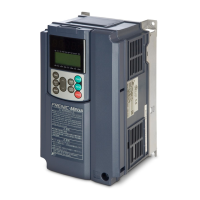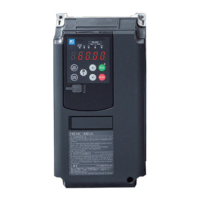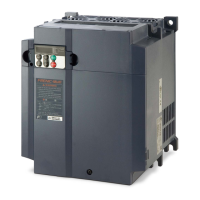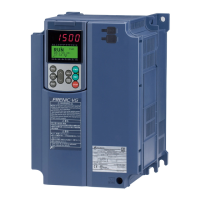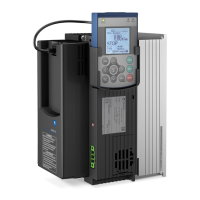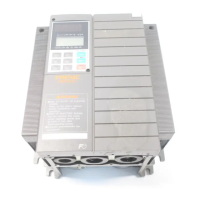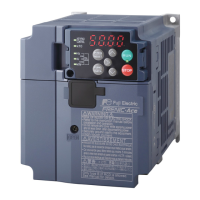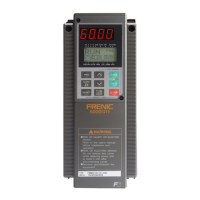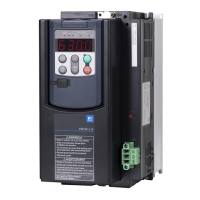App. C Effect on Insulation of General-purpose Motors Driven with 400 V Class Inverters
A-19
App.
[2] Suppressing surge voltages
There are two ways for suppressing the surge voltages, one is to reduce the voltage rise time and another
is to reduce the voltage peak value.
(1) Output reactor
If wiring length is relatively short, the surge voltages can be suppressed by reducing the voltage rise time
(dv/dt) with the installation of an AC reactor on the output side of the inverter. (Refer to Figure C-5 (1).)
However, if the wiring length becomes long, suppressing the peak voltage due to surge voltage may be
difficult.
(2) Output filter
Installing a filter on the output side of the inverter allows a peak value of the motor terminal voltage to be
reduced. (Refer to Figure C-5 (2).)
(1) Output reactor (2) Output filter
Figure C-5 Method to Suppress Surge Voltage
If the wiring length between the inverter and the motor is comparatively long, the crest value o
the surge voltage can be suppressed by connecting a surge suppressor unit (SSU) to the moto
terminal. For details, refer to 11.4.1 [5] "Surge suppression unit (SSU)" in the Chapter 11.
[3] Using motors with enhanced insulation
Enhanced insulation of a motor winding allows its surge withstanding to be improved.
C.4 Regarding existing equipment
[1] In case of a motor being driven with 400 V class inverter
A survey over the last five years on motor insulation damage due to the surge voltages originating from
switching of inverter elements shows that the damage incidence is 0.013% under the surge voltage
condition of over 1,100 V and most of the damage occurs several months after commissioning the inverter.
Therefore there seems to be little probability of occurrence of motor insulation damage after a lapse of
several months of commissioning.
[2] In case of an existing motor driven using a newly installed 400 V class inverter
We recommend suppressing the surge voltages with the ways shown in Section C-3.

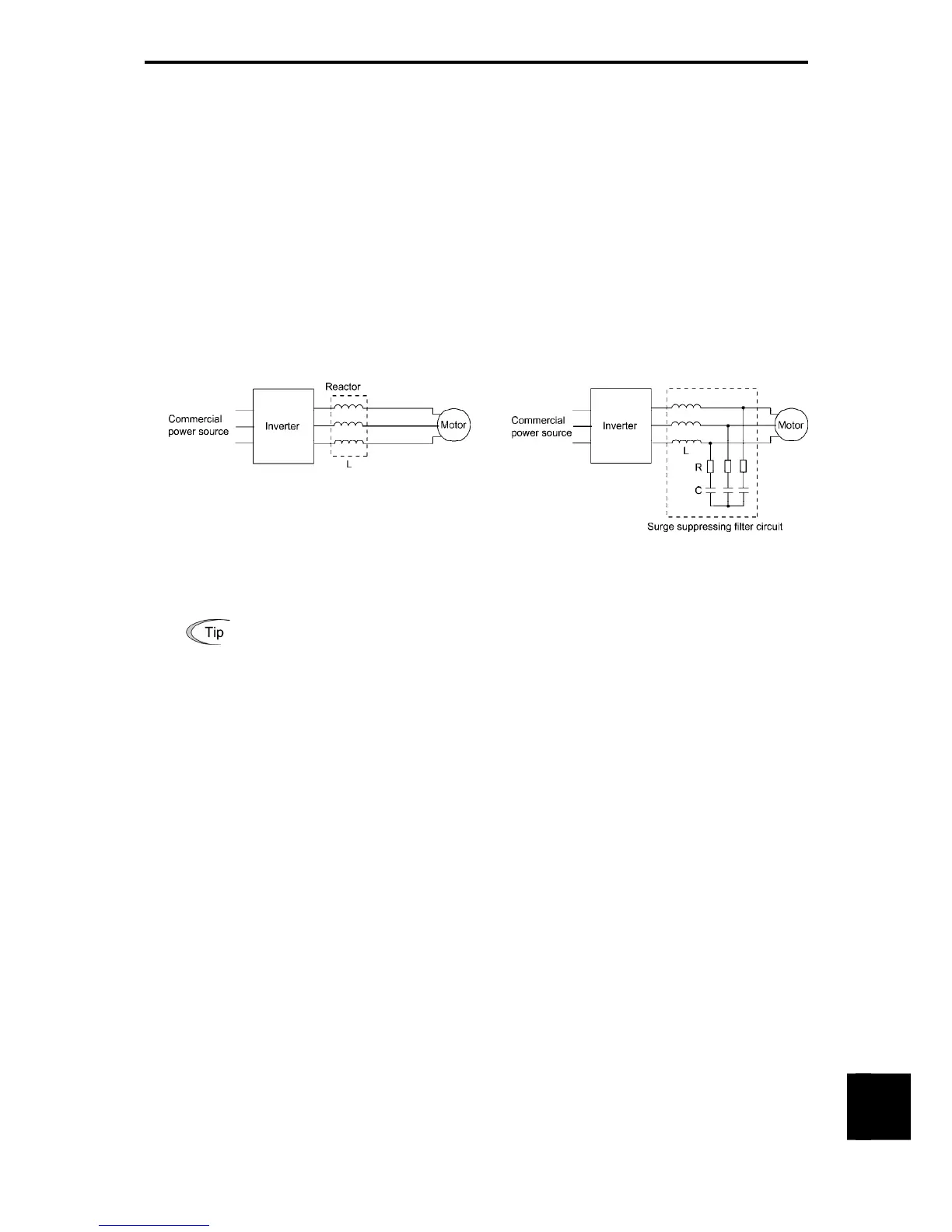